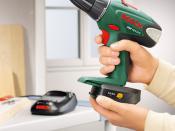Search
Login
Compact toilet Santek Caesar, installation, step-by-step instructions, useful tips
All kinds of products under the Santek brand are produced in Chuvashia, among it you can find bidets and urinals, sinks and toilets. The company's products are quite diverse, for example, Santek toilets can be purchased compact, floor or hanging, the company produces a large number of different models, the most famous of which are: Senator, Consul, Animo, Breeze, Iris, Polar, Boreal, Caesar. Santek products have quite satisfactory quality and reasonable cost, which can be explained very simply - minimal transportation costs and the absence of customs duties. Santek is a joint venture - German experts are participating in it.
Content:
- Toilet bowl compact Santek and its features video
- Briefly about technical characteristics
- Installing a new toilet - preparation for work
- Do-it-yourself toilet seat installation - workflow
- Dismantling an old toilet
- How to install a toilet video
- Tank installation
Compact toilet Santek and its features

The main advantage of the toilets from the manufacturer Santek can be called the fact that manufactured on the territory of Russia, they are suitable for installation not only in spacious modern toilet rooms - they are very easy to install in standard sanitary rooms of apartment buildings built back in the days of the Soviet Union.

The Santek Caesar compact toilet water discharge, which will be discussed later, can be direct or oblique, the water can be drained from the tank in single-mode or dual-mode, economical version.
No less positive is the completely democratic cost of Sentec toilets. Attracts the attention of customers and modern product design, neat appearance.
But it should be noted that when studying reviews of different product models from Santek, you can find many complaints about:
- the relatively long period required to draw water into the toilet bowl,
- inhibited operation of the drain system (does not work the first time).
Given this point, we can recommend:
- when choosing a toilet, very carefully check the selected product,
- issue a warranty card in accordance with all the rules,
- ask the seller-consultant how the product is replaced or refunded.
Briefly about technical characteristics

Dimensions household toilet compact Caesar has the following:
- length - 66 cm
- width - 37 cm
- total height 74.5 cm, bowls 39.5 cm.
Water is discharged horizontally in it, i.e. into the wall, the location of the tank is on top of the toilet, the volume of the tank is 6 liters, water is supplied from below. The toilet is a floor type. His bowl is not equipped with an anti-spell system and a shelf. Typically, Caesar models are equipped with a duroplast seat.
The design style is modern, the color of the product is white. A set of fasteners is included in the kit. The manufacturer of the product gives a guarantee:
- 3 years on the seat
- 5 years - on a ceramic bowl and tank.
Installing a new toilet - preparation for work
Do-it-yourself installation of the toilet should begin by checking the operation of the tap, which can shut off the supply of cold water to the toilet, or to the entire apartment. Turning off the tap and making sure that water does not enter the system, you can proceed directly to the task. If the water still flows and enters the tank of the old toilet bowl, then first of all it will be necessary to replace the stopcock.

After making sure that the water is shut off, you should stock up:
- adjustable wrench
- a new flexible hose for water supply, it should be noted that the external thread on the shut-off valve will require an internal thread on a flexible connection, the internal thread of the tap, respectively, is external.
You will also need:
- corrugated or rubber cam,
- silicone packaging for waterproofing, preferably with antibacterial properties,
- set of wrenches,
- punch - for making holes in which plugs will be inserted and fixing bolts screwed in,
- hammer,
- pencil or marker.
Do-it-yourself toilet seat installation - workflow
Dismantling an old toilet

- Unscrew the flexible hose.
- To remove the tank from the old toilet bowl, if this is problematic, you can simply break the product and remove it in parts.
- Remove all fasteners from the old toilet.
- Next, you will need to loosen the old toilet bowl and knock out its cemented socket from the Du100 pipe. The pipe itself should not be touched - it will be needed.

Then you should level the site for the installation of a new sanitary ware. When performing this task, different situations may arise - under the base of the old toilet bowl there may be a strong dry board well fixed in the cement screed - in this case, you can install a new toilet bowl on it. If the integrity of the board is in doubt, it is better to remove it, and fill the hole in the floor with a cement mortar prepared according to the usual recipe or a tile adhesive solution reinforced with Ceresite.
- We collect and remove all garbage received as a result of dismantling.
How to install a toilet

We move the new toilet bowl to the pipe so that the remaining piece of the drain pipe can be inserted into its socket. Correction of its position should be carried out in order to determine the drilling points of the openings for choppers. The diameter of the drill select the appropriate. After drilling, we install cork-choppers, they must be in the set of fasteners, if it turns out that it is difficult to insert them manually - we resort to using a hammer. Before installing the screws, do not forget to put on plastic washers. Having tightened all the screws, we proceed to wind the water supply hose to the tap. Carefully tighten the flexible eyeliner nut.
Tank installation

First, prepare:
- reinforcement of the internal structure of the tank, which will ensure the discharge of water,
- a gasket for sealing the connection of the toilet bowl and the tank,
- grease preventing corrosion processes on fasteners,
- fasteners: nuts, bolts, conical gaskets made of rubber.
Having finished the preparation, we proceed to the installation, the sequence of actions will be as follows:
- First, you need to lay the gasket on a wide rear shelf, such gaskets often have a self-adhesive base. If the base is not sticky, silicone glue is required on both sides.
- Then install a drain tank, while the holes on the bottom of the tank and on the shelf of the toilet bowl must match.
- The installation of bolts in the mounting holes is carried out after putting on conical gaskets made of rubber. Tighten the bolts with nuts, from below, under the toilet shelf. Mounting should be done in such a way that it is impossible to move the tank around its axis, to move or tilt it.
- Next, you can connect a flexible water supply hose.
- By connecting the hose, you can open the faucet and try to fill the toilet bowl with water - the junction of the tank with a flexible hose should not get wet, and the liquid should not leak from under the tank.
- If a leak is not detected, you can test the operation of the drain device.
- In the case of the normal functioning of the drain valves, the toilet can be considered ready for use.

A few recommendations from experts:
- when connecting a flexible water supply hose, make sure that there are rubber gaskets - if they are missing, it will be difficult to ensure the tightness of the connection,
- in case of problems with the tightness of the cone gaskets, silicone can be applied to them,
- nuts when installing a santek toilet bowl seat can be lubricated with machine oil, this will make it possible to remove the seat quickly and easily, if necessary,
- it is advisable to walk around the entire perimeter of the toilet sole with transparent silicone sealant; excess waterproofing material will need to be removed immediately.
It will take about 12 hours for the silicone to solidify completely. After that, the toilet can be considered completely ready for use.





